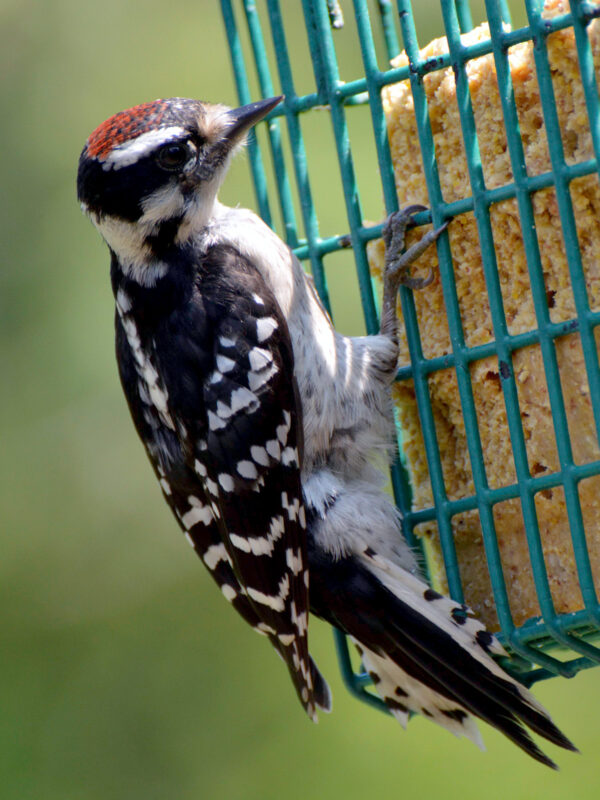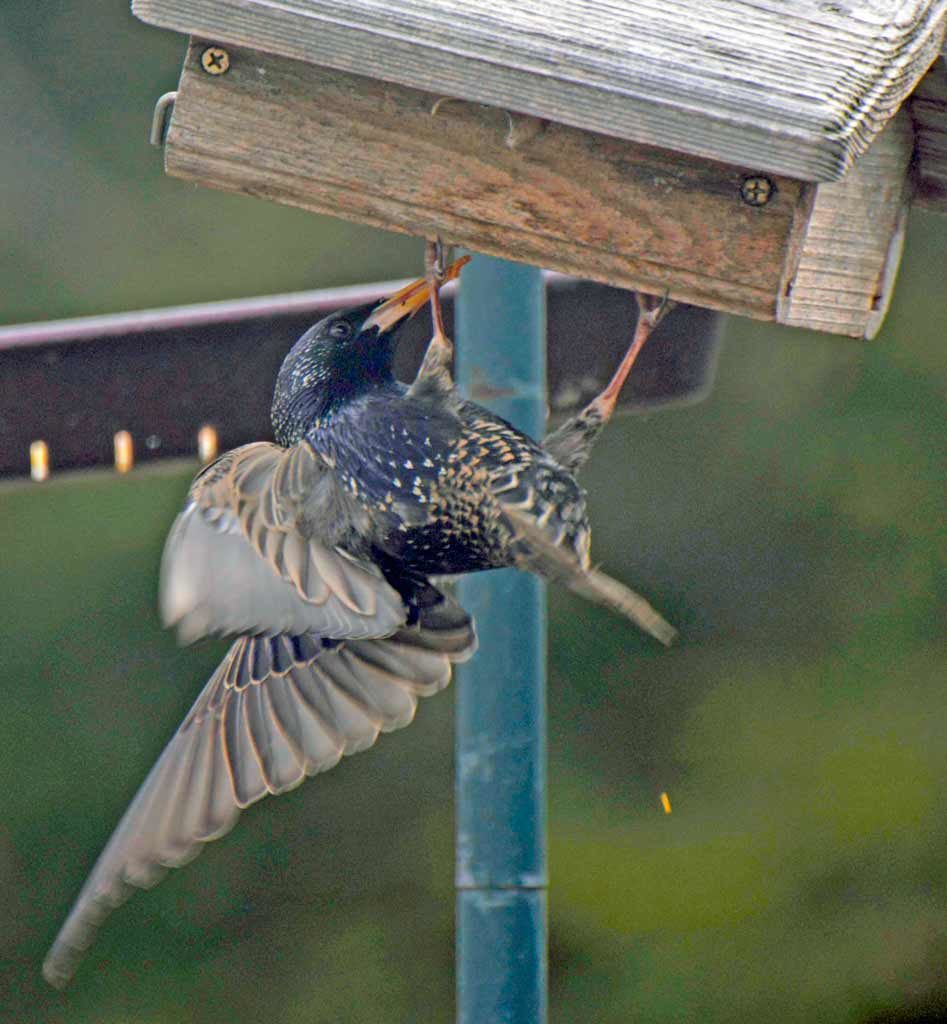I think of suet as a type of insect substitute, since it’s animal fat.

In winter, it provides fat for energy to help birds get through the cold nights. We offer suet in the summer, too, and we’ve learned it’s important to buy the All-year variety so it doesn’t melt or become rancid.

Sometimes we’ve had a problem with starlings. We watched as they not only chased away our native birds but also quickly ate up the suet we just bought.
So we bought a type of suet feeder where birds have to cling upside down to eat it — not a problem for birds such as woodpeckers and chickadees, but less comfortable for starlings. After a while, through, the starlings learned that they could hover under it, poke at it, then fly down to get whatever suet fell to the ground. They’ve been quite successful doing this, so it makes offering suet less enjoyable.
In this feeder, it seemed like the suet was being pushed up when birds pecked at it, though. I’m not sure if this was a problem, but we solved it by putting a flat stone between the suet and the roof of the feeder to keep it pressed close to the bottom grate.
Squirrels also like suet, but where they’re a problem we use the red hot pepper suet, which they don’t like but birds do. Generally, though, we put the suet on the feeder pole that has the squirrel-proof baffle, which is very effective as long as we make sure we don’t have a lawn chair or other jumping-off spot too close to the suet. (And they can jump quite far!)
Resources
- Cornell Lab of Ornithology:
